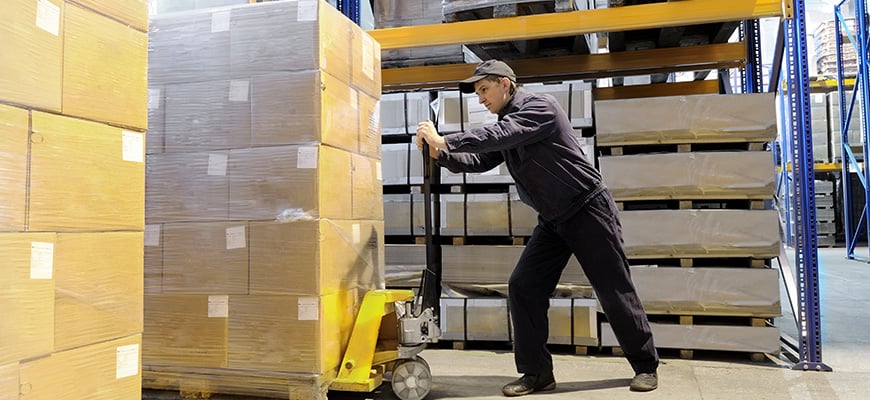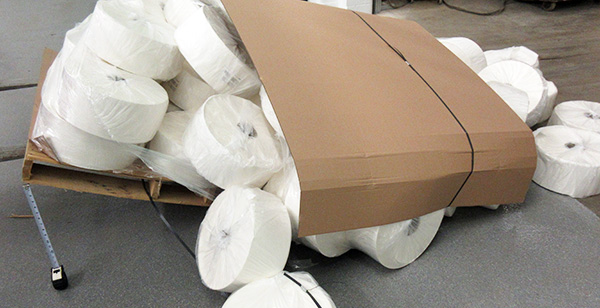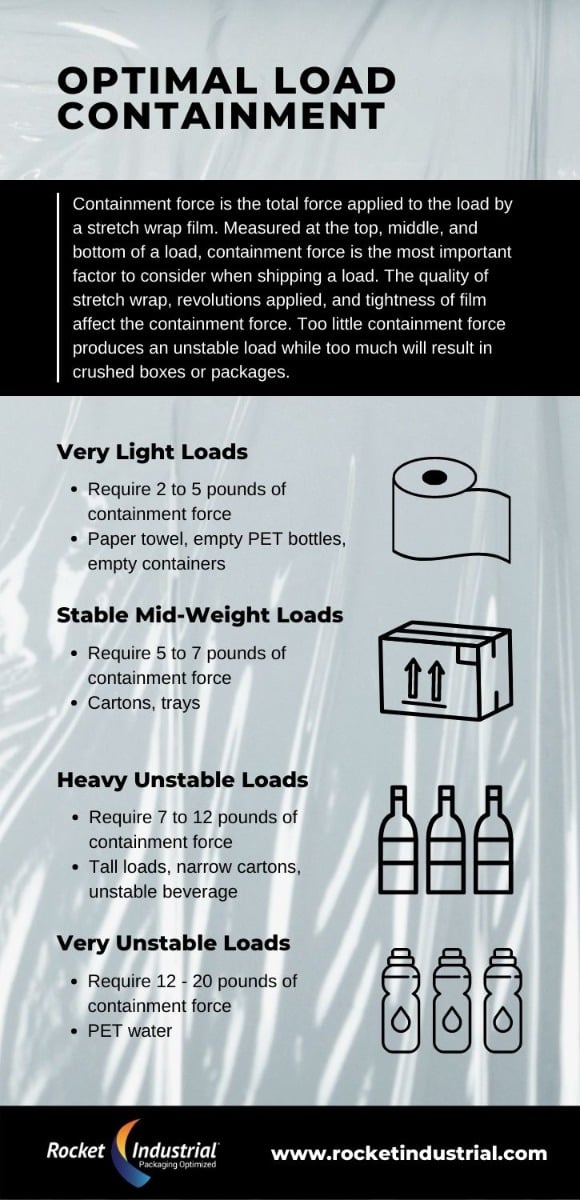
Creating your own Rocket Industrial personal account has many benefits:

Have you experienced pallet load failure? What kind of effect did it have? Damaged goods are expensive and can also negatively affect your reputation. Unfortunately, damage from transit is something most companies experience. The good news is, by following a systematic approach to removing the most common factors contributing to load failure, you can prevent pallet loads from failing during transit.
Our engineers have studied various load containment situations in our lab and have determined that ineffective stretch wrapping is the leading cause of load failure. Load containment is the holding force by the stretch film to maintain load integrity. By focusing on improving four main areas that contribute to load failure, you’ll be able to prevent product damage and increase the chances your loads will arrive safely to their destinations.

Cause #1 - Uneven distribution of film or thinking a higher gauge stretch film is better. Inconsistent application of film can happen if loads are being hand wrapped or your stretch wrapper isn't running efficiently. Assuming that the use of a high gauge stretch film will make loads more secure is also a poor choice. We recommend diving deeper into your stretch film use to find the best solution.
Cause #2 - Using outdated, low-performance or economical films. From our internal studies, we know that economical films tend to rip and tear more easily. As soon as a tear occurs in the stretch film the integrity of the load is at risk.
Cause #3 - Not having a continual maintenance program. Routine maintenance saves you time and money by making sure your equipment is 100% efficient. We’re proud to offer preventative maintenance programs and skilled technicians to keep your stretch wrapper performing optimally.
Cause #4 - Failing to create a strong film bond to the pallet. A strong bond can be achieved by locking your load to its pallet by using a packaging technique called “roping.” You can achieve this by rolling the bottom 3 to 5 inches of film into a tight cable and then driving it down on the pallet an inch below the pallet boards. The trick is to keep the roping high enough to avoid the forks of a forklift or pallet jack, yet low enough to lock the load to the pallet.
Load containment refers to the wrapping force that holds a pallet together. Measuring containment force regularly ensures loads are safer, resulting in less damages. The following infographic highlights the force required to better load containment by pallet type.

The better you wrap a load, the better chance the pallet has of arriving damaged free. If you’re experiencing pallet load failure, consider taking advantage of our Pallet Pit Stop. Our engineers can do an analysis of your existing stretch wrap materials and pallet processes onsite or in our test lab. You’ll then be provided with recommendations to better protect your loads and cut costs.
We want to be a part of your packaging journey and help you choose the right materials to package with less time, cost waste, and labor. Turn to our Pallet Pit Stop where our trained crew can help improve your complete packaging system. Contact our test lab today!